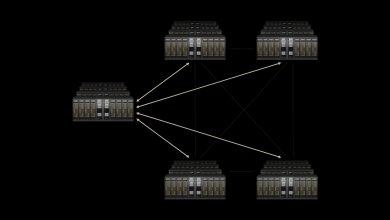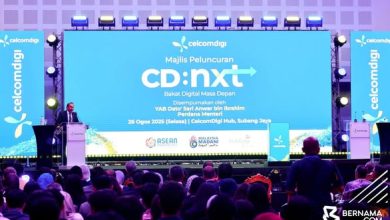Building Digital Resilience: Why Hybrid Multicloud Is Key to Business Continuity
Embedding Resilience Across All Organisational Levels So That Businesses Can Secure Operational Stability, Drive Innovation, and Confidently Navigate the Complexities of an Unpredictable Digital Future

The hybrid multicloud will be critical moving forward.
Imagine waking up to find that a single technical misconfiguration had frozen digital payments, disrupted healthcare services, and halted critical supply chains across multiple ASEAN countries overnight: How prepared would your business be to respond?
As ASEAN rapidly transitions towards digital-first economies, robust and resilient digital infrastructure is now essential. With landmark digital resilience legislation, such as Singapore’s forthcoming Digital Infrastructure Act in 2025, there is clear recognition that resilience extends beyond cybersecurity alone, encompassing system reliability, physical infrastructure stability, and digital configuration accuracy.
Yet, despite the clear need, many across the region continue to repeat costly mistakes in their business continuity planning. To safeguard their operations and fortify their resilience, businesses must embrace comprehensive risk assessments, foster inclusivity, and maintain a vigilant approach to cybersecurity.
Find the Sweet Spot In Balancing Risk
Balancing an IT budget with an organisation’s risk appetite must involve aligning technology investments with both strategic goals and acceptable levels of operational risks. While budgeting must account for essential infrastructure, software licencing, cloud services, and cybersecurity measures, we must leave room for innovation and digital transformation.
A risk-averse organisation may prioritise stable, proven technologies and allocate more to security and compliance, ensuring minimal disruption. Conversely, a risk-tolerant organisation might invest in emerging technologies like Artificial Intelligence (AI), blockchain, or edge computing to gain a competitive edge, accepting higher uncertainty for potential long-term gains.
Ultimately, it is about finding the sweet spot and the fact that the IT budget must support resilience, scalability, and innovation, while reflecting the organisation’s comfort with technological risks.
The Hidden Gaps That Break Continuity
One common pitfall is inadequate risk assessments. Organisations frequently underestimate or dismiss certain risks, only realising their vulnerability when it is too late. ASEAN businesses, whether in financial services, healthcare, logistics, or manufacturing, must proactively anticipate disruptions—from IT glitches and natural disasters to targeted cyberattacks and global trade disruptions, like recent tariff fluctuations. Recently, a tax system upgrade in Indonesia experienced glitches, significantly impacting business operations, particularly critical processes like tax reporting and timely calculation of tax obligations.
Incidences like the CrowdStrike outage in July 2024 further underscore the need for comprehensive preparedness. This incident shut down government and corporate IT systems worldwide, causing significant chaos across Asia Pacific and raising unresolved questions about financial fallout and liability. Processing systems at airports in Hong Kong, India, Japan, and Singapore were severely impacted, resulting in numerous flight cancellations and delays. In Malaysia, the outage disrupted train booking systems, ATMs, television broadcasting, postal and retail services, and various websites, highlighting the critical need for robust, resilient digital infrastructures.
Another critical oversight is failing to integrate diverse internal perspectives. Effective business continuity planning should not reside exclusively within IT or risk management teams. Input from across the organisation—from frontline operations to executive management—is vital for accurately identifying vulnerabilities and formulating robust mitigation strategies. Regular reviews and updates are equally essential; neglected plans quickly become obsolete, leaving businesses vulnerable at critical moments.
Moreover, organisations must carefully consider strategic vendor partnerships. To avoid fragmentation and inefficiencies, they should maintain a consolidated view of vendor capabilities across the business. To that extent, organisations should proactively engage with trusted partners who deliver built-in redundancy and resilient architectures—ensuring seamless continuity, simplifying management, and enabling faster recovery in times of crisis.
Supercharging Business Continuity with Hybrid Multicloud
Hybrid multicloud strategies offer resilience without imposing reliance on a single provider. By strategically distributing workloads across public clouds, private clouds, and on-premises infrastructure, organisations significantly enhance redundancy and flexibility.
By reducing downtime risk and enabling continuous business operations even during unforeseen outages, a hybrid multicloud approach provides operational agility, allowing ASEAN enterprises to pivot quickly between alternative digital setups, ensuring service continuity and protecting customer confidence. It is encouraging that according to the 2025 Enterprise Cloud Index, almost all Singapore decision-makers (95%) agree that their organisations benefit from adopting cloud-native applications.
However, to fully unlock these benefits and ensure seamless service continuity, organisations must pair cloud-native adoption with an effective hybrid multicloud strategy—one that allows them to better manage complexity, scale efficiently, and optimise costs across environments.
In sectors like finance and healthcare, uninterrupted service delivery is essential. Hybrid multicloud environments mitigate cybersecurity risks and infrastructure failures by dispersing critical workloads, eliminating single points of failure, reducing vulnerabilities, and ensuring regulatory compliance.
For instance, Straive, a Singapore-headquartered content technology solutions provider, leveraged the Nutanix Cloud Platform to overcome downtimes, lengthy maintenance windows, and troubleshooting inefficiencies. With a hybrid multicloud strategy, Straive scaled business operations three times faster and improved critical application uptime by 20%, significantly reducing recovery times and protecting vital business processes.
Beyond enhancing operational stability, hybrid multicloud environments also empower organisations with the agility required for rapid innovation and market responsiveness. By seamlessly scaling resources to meet fluctuating demands, businesses can swiftly capitalise on emerging market opportunities, accelerate product development cycles, and enhance customer experiences. This agility not only strengthens competitive advantage but also helps embed a proactive mindset across teams, laying a strong foundation for the cultural transformation necessary to sustain long-term resilience and adaptability.
Digital Resilience Is a Mindset, Not Just a Metric
Adopting hybrid multicloud for robust business continuity requires more than technical investments—it necessitates a cultural shift. ASEAN businesses must foster an organisational culture that values resilience, adaptability, and continuous learning. Leaders play a central role by clearly articulating the benefits of hybrid multicloud strategies, investing in continuous improvement, and supporting innovation-driven mindsets.
By proactively embedding resilience across all organisational levels, businesses can secure operational stability, drive innovation, and confidently navigate the complexities of an unpredictable digital future.




